Shannonvale/Kilteelagh
Houses within 5km of this house
Displaying 14 houses.
Houses within 5km of Shannonvale/Kilteelagh
Displaying 14 houses.
| House name | Description | |
|---|---|---|
| Drummaan | Drummaan House is described as "in ruins" on the 1st edition of the Ordnance Survey. The ruins have disappeared by the later 25-inch map of the 1890s. This townland is now located in county Clare. | |
| Knockbrack | At the time of Griffith's Valuation, Joshua Seward was leasing a house valued at almost £10 at Drummaan East, barony of Leitrim. Since 1898 this house has been located in county Clare. This seems to be the house shown on the 1st edition OS map as Knockbrack. A house valued at £14 at Drummaan East, county Clare, was owned by Maj. Gen. Spencer Cooper in 1906. | |
| Williamstown Hotel | Joshua Seward was leasing a building valued at £7 to the City of Dublin Steam Packet company at Drummaan East, barony of Leitrim, county Galway, at the time of Griffith's Valuation. This building functioned as the Williamstown Hotel. The original hotel building is no longer extant but the stable block remains and is used as a house. Following 1898 boundary revisions this property is now located in county Clare. |
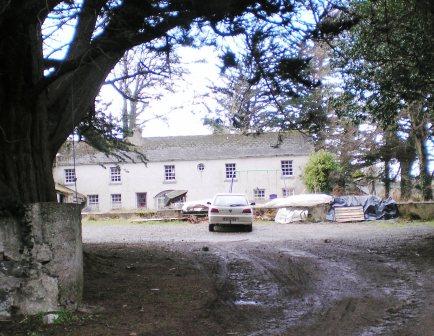
|
| Williamstadt House | Previously the residence of the Brady family, Williamstadt passed to Dr.Francis Sampson through marriage in 1833. At the time of Griffith's Valuation it was valued at £10 and Sampson was leasing it from James Egan. Up to 1898 this house would have been in county Galway. The house is still extant and occupied. |
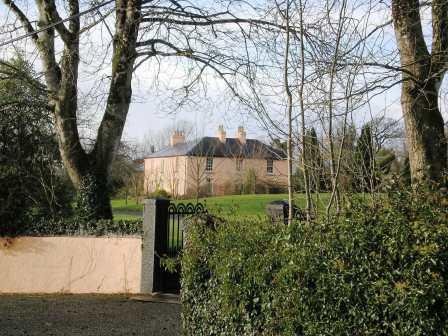
|
| St Davids | Lewis refers to the fishing lodge of the Very Reverend Gilbert Holmes, Dean of Ardfert, "beautifully situated on the banks of the Shannon". At the time of Griffith's Valuation, the lodge was valued at £13.10 shillings, occupied by B. W. Holmes and held from John D. and William Kellett. This fishing lodge was altered in the 1860s and renamed St Davids. It remained in the possession of the Holmes family until the 1980s and now functions as a guest house and restaurant. It was offered for sale in 2011. |
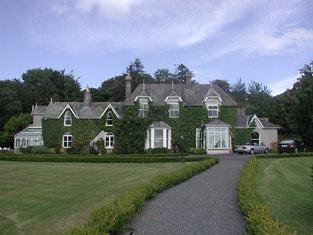
|
| Annaghbeg | The home of the Minnitt family in the 18th and 19th centuries, occupied by Joshua Minnitt in 1814. The Ordnance Survey name books describe it as " good dwelling house" in 1840. It wa the residence of Joshua R. Minnitt in 1837 and in the early 1850s. He held the property from the representatives of Eccles Cuthbert and the house was valued at £37. This house is still a country residence. |
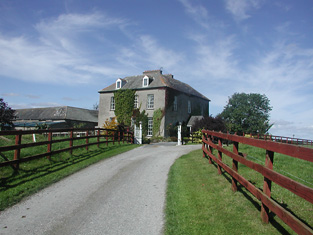
|
| Annagh Castle | Annah Castle was the home of Joseph O. Tabourdeau in 1837 and of Arburthard Goold in the mid 19th century. Goold held the property from John Minchin and the buildings were valued at £20. This building is no longer extant. | |
| Johnstown Park | This house was built for Peter Holmes, MP, c. 1777 and probably designed by William Leeson. It was originally known as Peterfield. It was leased to Samuel Prendergast in 1823. Lewis records J.G. Prendergast as resident in 1837 and the Ordnance Survey Name Books refer to it as the residence of Counsellor Prendergast in 1840. The house valued at £49 was occupied by Thomas G. Prendergast in the mid 19th century and held from the representatives of Peter Holmes. From 1865 to 1936 Johnstown was the home of the Headech family. The house was unroofed in the early 1940s and is now demolished. |

|
| Lodge | An early 18th century house, originally the home of the Barry family, sold by them to Lieutenant Colonel Joseph Gabbett in 1766. Passed by inheritance from the Gabbetts to the Studderts, it was occupied by Francis Green in 1814 and by W. Studdart in 1837. The Ordnance Survey Name Books refer to it as "a commodious ancient dwelling house, the residence of William Studdert" in 1840. Maurice Studdert was the occupier at the time of Griffith's Valuation, when the house was valued at £25 and held from the representatives of General Gabbett. Maurice Studdert was the son of the Reverend George Studdert, rector of Kilpeacon, county Limerick, his wife, Mary Gabbett of High Park. Mrs Eliza Studdart of Lodge, Nenagh owned 648 acres in the 1870s. |
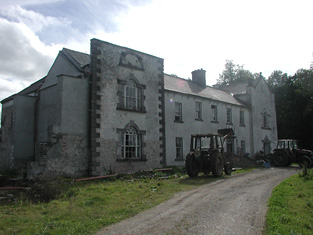
|
| Blackfort | William Molloy was resident in 1814 and W. Minnett in 1837. Blackfort was advertised for sale in May 1851 by the Reverend David Fitzgerald, Edward Galwey was the petitioner. By the time of Griffith's Valuation Edward Galwey held Blackfort, or Lisduff as it became known, in fee. The buildings were valued at £15.10 shillings. Edward Galwey of Lisduff, Nenagh, owned 245 acres in county Tipperary in the 1870s. Richard Galway occupied Blackfort in 1906 when the house was valued at £22+. |
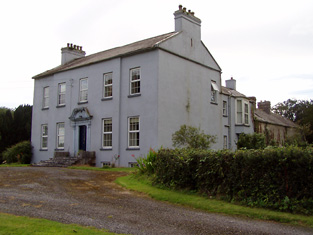
|
| Youghal House | In 1837 Lewis refers to the seat of W.Smithwick "surrounded by thriving plantations". The house was valued at £39 at the time of Griffith's Valuation and held by William Smithwick in fee. The Smithwicks were still resident at Youghal House in the 1970s. |

|
| Youghal Lodge | Located on the shore of Lough Derg this house is referred to in the Ordnance Survey Name Books in 1840 as Youghal Cottage. However it appears on both the 2st and 25-inch edition maps as Youghal Lodge. At that time it was owned by William Smithwich but Captain Barton was living there. It was occupied by Scrope Bernard at the time of Griffith's Valuation. He held the property from William Smithwick and the house was valued at £19+. A building is still located at this site. | |
| Knigh Cottage | In 1840 the Ordnance Survey Name Books mention Right Hon. Thomas Lefroy as the proprietor of this house, "a neat cottage, the residence of William Kingsley". He was still the occupier at the time of Griffith's Valuation, when the house was valued at £5. Family history sources suggest that the Kingsley family continued to reside at Knigh Cottage into the early twentieth century when it was acquired by the Harty family. It is still extant. | |
| River View (Knigh) | James Kingsley was leasing this property from the Farrar estate at the time of Griffith's Valuation, when it was valued at £10+. In 1840 the Ordnance Survey Name Books refer to River View House as "a commodious dwelling house, the residence of John Tuthill, esq.". Buildings are still extant at the site. |

